
MoBites
MoBites is a research and food design venture, embodying visions of bringing food trucks into China’s market and providing reliable and nutritional breakfasts for consumers in Yantai, China.

MoBites
MoBites is a research and food design venture, embodying visions of bringing food trucks into China’s market and providing reliable and nutritional breakfasts for consumers in Yantai, China.
Overview
👤️ Who
Habitants in Yantai, China with tow distinguish personas - traditional conservative Chinese and open mind pioneers
❓️Why
Promote healthy food spirit to Chinese from Yantai, a 2-tier city in northern China
🛠️ What
Food Truck venture design from research to new venture launched, includes food truck design, food design, business design, and user experience design
📄️ Delivery
Research Report, Ordering Application Design
Building a breakfast brand in a small city to generate a “eat healthy” trend.
Picture this: it is 7:30 am. You wake up and know you overslept a bit. Dressing up and kissing your spouse, you rushed downstairs to catch up that cramped bus, which you would definitely be late if you did not get on.
You are at the bus stop and luckily the bus is not here yet. You feel hungry. Looking around and as usual, you saw that familiar small food cart, selling ubiquitous Baozi and soy milk that you are so fed up with but there are few other choices. The food looks greasy and nutrition-wise unfavorable, the cart not clean, but your gut is urging for the last chance before you heading to office. The bus honks its horn and, though struggling, you still grabbed them, just like other workdays.
This scene is quite prevalent in China, especially in second- and third-tier cities, where white collars were hustling every day, too busy to have a decent meal after getting up. And when people do want to eat better for breakfast, safe and healthy choices are limited compared to first-tier counterparts.
Highlight Features
We hope the ordering system includes the ability to empower people with healthy awareness rather than an online ordering tool.
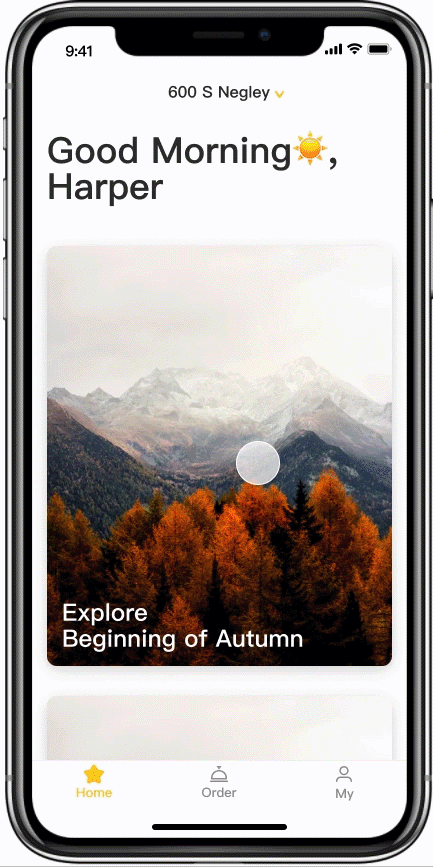
1. Food Story Learning
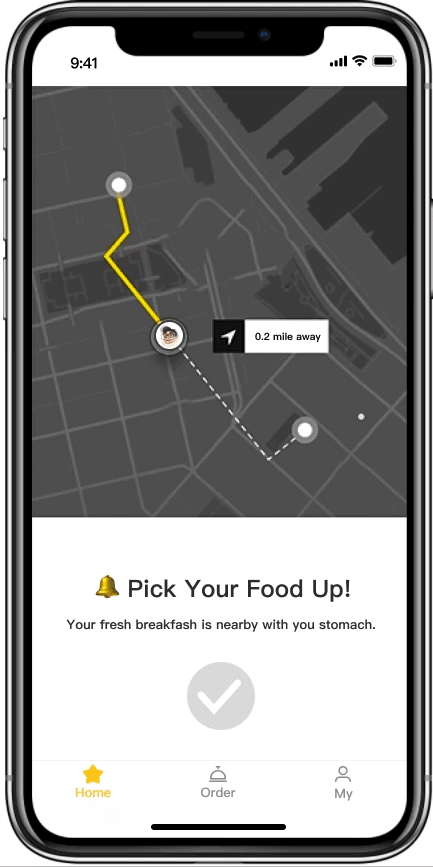
2. Pick Up Reminder
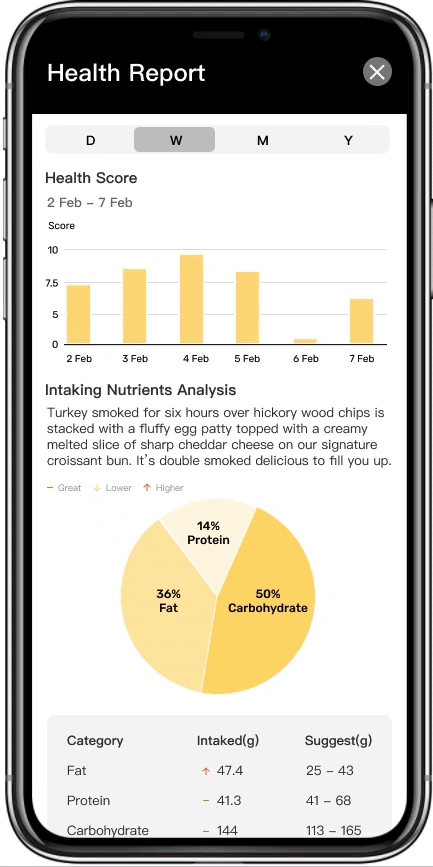
3. Auto Health Report

Conclusion 1
Nutrition, taste and safety are most valued, but the status quo is worrying.

The first three elements of white-collar workers in first-tier cities who are most concern about breakfast are:
1. Nutritious / balanced
2. Goot to eat
3. Safe and secure
However, the survey found that nearly 70% of white-collar breakfasts are high-calorie staple food, most buns (36%) and porridge (32%), followed by nooodles (27%) and bread / cakes (27%).
The northern population generally has a higher proportion of eating staple foods in the morning than in the south.
Conclusion 2
They prefer to eat at home with limited breakfast choices because not only it is cheaper, but also safer.
This questionnaire distributed in an enterprise in Yantai to gain information of the current status of breakfast market and consumers’ perceptions. 393 data were collected. 48% was from 25 to 30 years old and around half of participants were married with children.
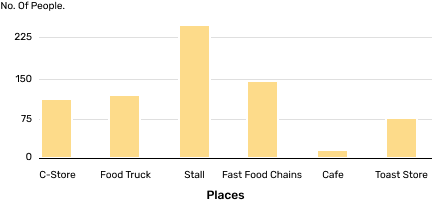


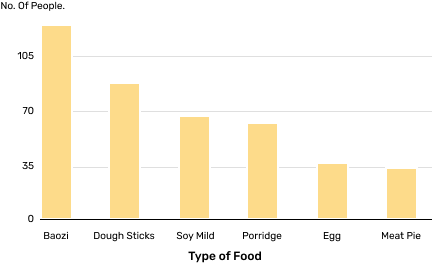
We then talked with 8 people aging from 20s to 50s with various occupations. Those real data from tenants in Yantai led us to conduct further in-depth, one-to-one consumer interview. The interviewees were selected based on these factors:
We designed several visual tools to help people express their attitudes towards food. One was to let the interviewees rank the factors they care about breakfast from the least important to the most. Both western nutritional labels like “sugar-free” and Chinese ones like “Good for stomach” were examined.

Analyzing and synthesizing the data we gathered, we were able to find what the consumers were telling us.The consumers in Yantai can be separated into two groups.
Group A: more traditional, like to stay in their comfort zone of eating, accept old Chinese wellness values, care about food safety. Occupies greater proportion of population in Yantai.
Group B: more open, usually have experience of living in bigger cities or abroad, like to actively seek out new things and share with others. Less proportion of population in Yantai.

We identified and ranked their different needs, similar to Maslow’s hierarchy of needs.
 Click there to find the comprehencive reserch document for reference.
Click there to find the comprehencive reserch document for reference.
The consumer research findings led us to the experience design part, where I portrayed the experience journey based on our personas. I borrowed the AARRR framework to complete the journey: acquire different groups of users with various channels, activate them with digitalized and paperless ordering experience, retain and turn them into advocates (refer) with localized and socialized content, attract people around them and generate more revenue.
There were two personas based on research insights.
Group A: Kai Gao.
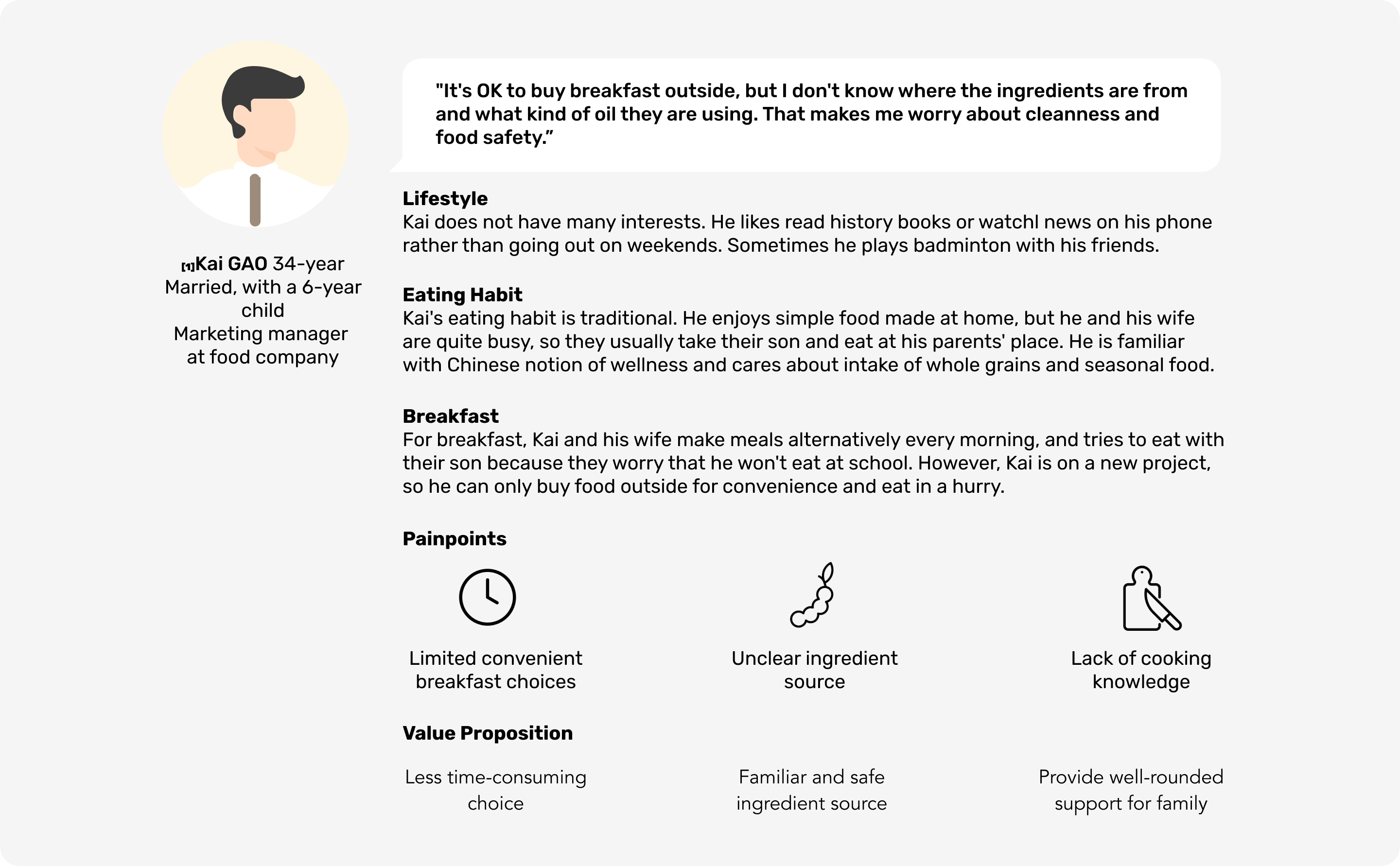
Characteristics of Group A:
Storyboard of Group A:
Exquisite and exotic cuisine, brought to you.
Key words: A modern bite in familiar taste

Group B: Susie Zhong.
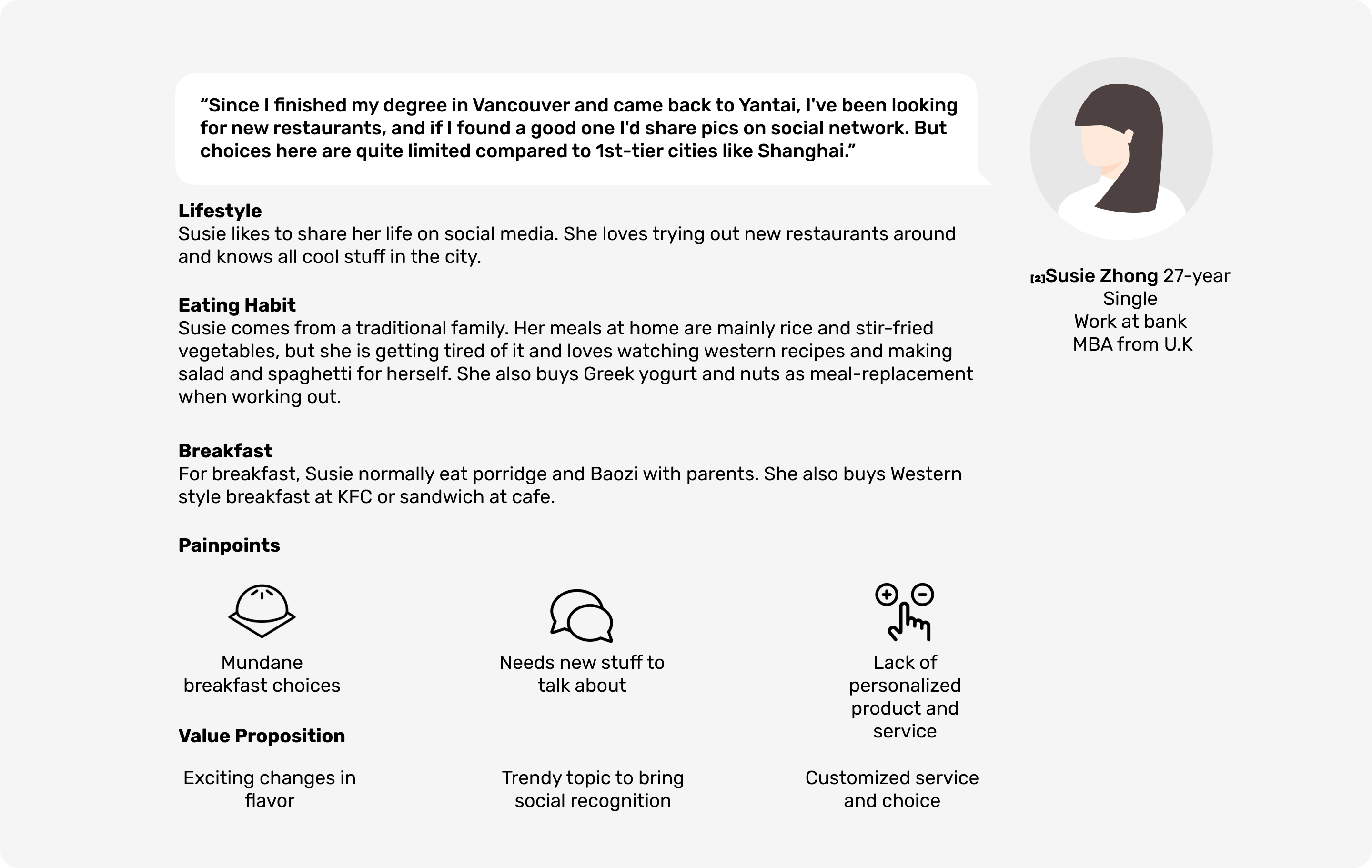
Characteristics of Group B:
Storyboard of Group B:
The family kitchen by your side.
Key words: Limited seasonal food gone viral

I designed the ordering system based on the Mini Program of Tencent. And the function as simple as possible to cover two personas' needs either.

We created two personas, reflecting the consumers we aim at: those who eat in traditional way but worry about eat-out breakfast, and those who love to seek novelty and share with others.

Based on the insights of this project, I designed the wireframe for our target users. We want to design a process as simple as possible for customer to complete the purchase. So, there was a linear flow combine with some suggestions to help user make choice more easier. Furthermore, the cashless payment method was more convenient in 2017 in China.
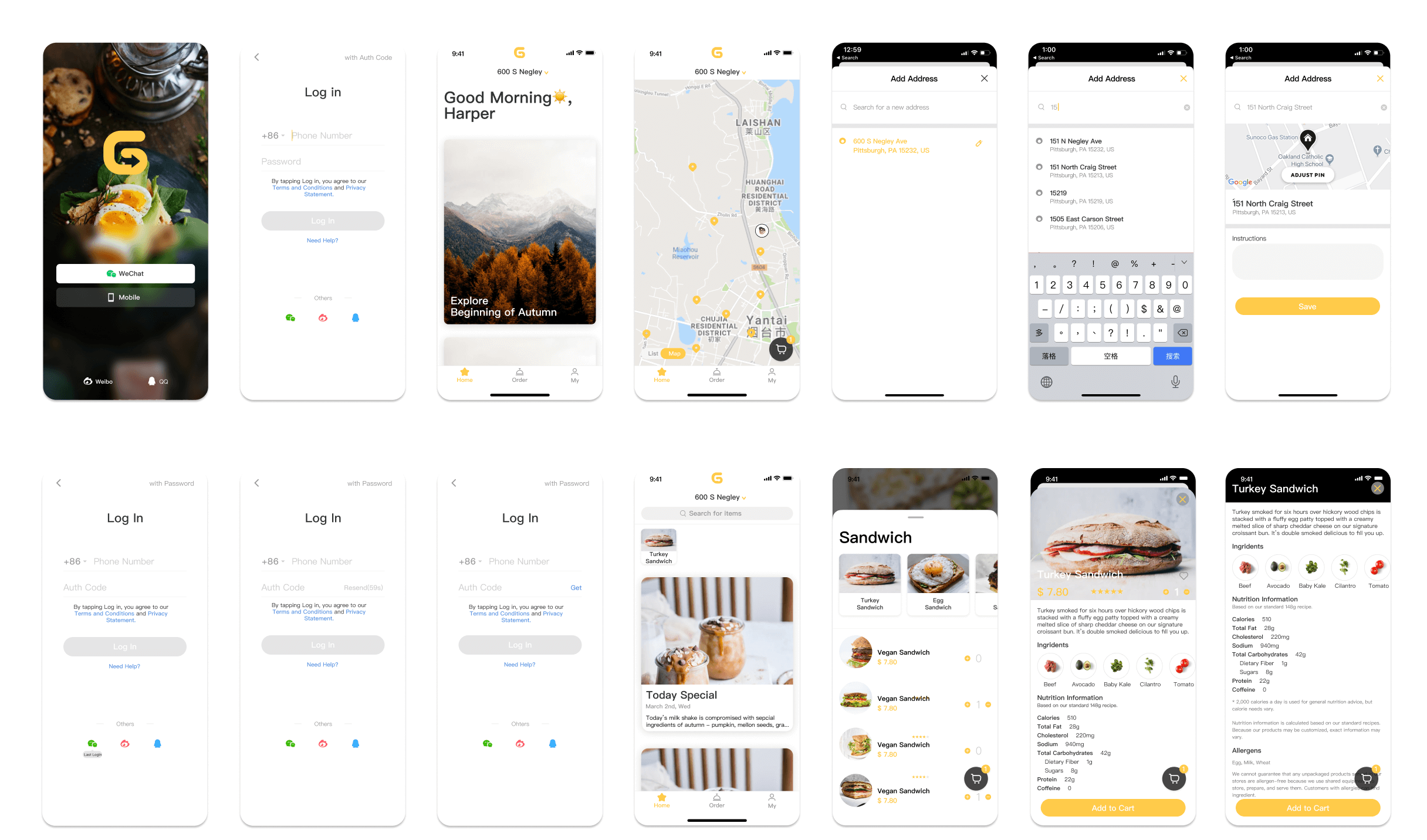
MoBites was my first project that worked as an UX researcher and UX designer. It was really a big challenge for me since not only I had two roles but also it was an incubate business needed to explore. After several months reseached, our team had a general learning about the FOODTRUCK market in China, expecially in Yantai. But there had a bunch of insights needed to be discover yet.
We tested the flow based on the prototype about one week, there were several points need to be iterated (just focused on the ordering experience):
📐️ ️Define a usable measurement to test the model.
🗣️ Act as the officer and customer to learn the process as a beginner, based on the real experience to design.
🤝️ Cooperate with other team members tightly to set up a productive SOP (Standard Operation Procedure).
📧️ Learn more about the project detail please reach out me by haokunw1@gmail.com.